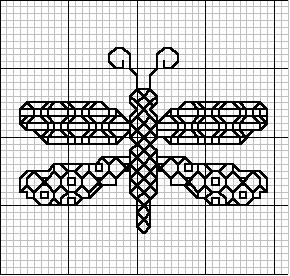Blackwork
The broadest definition of blackwork is black threads, usually silk, worked on white fabric. It has come to mean different things to historians of different ages now. Black work has been in existence since Egyptian times. It's style as well as colors being added has varied over the years.
Commonly known as Spanish Work, Catherine of Aragon, first wife of Henry VIII was credited with bringing it to England. The geometric work did become more popular there at that time. However, because of the Islamic influence in Spain, embroidery is evident in Toledo, Almeria, and Andalusia, the most southern areas of Spain. These were the earliest and thus most influcnced by Islam. Most of Andulusain embroidery was geometric with one color of silk thread worked on a ground of local cotton in running, double running or cross stitch. This is known as Spanish work or black work even though the one color thread is not necessarily black.
We know that blackwork predated Catherine as it was mentioned in the 14th Century by Chaucer in The Miller's Tale. The carpenter's wife is quoted as wearing a blackwork smock and cap. White was her smock, embroidered all before and even behind, her collar round about. Of coal-black silk, on both sides, in and out; the strings of the white cap upon her head were like her collar, black silk worked with thread.
Blackwork again changed from the more geometric designs to the free style designs during the reign of Elizabeth I, daughter of Henry and Anne Boleyn, second wife of Henry. Embroidery of this period included goldwork and metal spangles.
Click on image for printable chart
